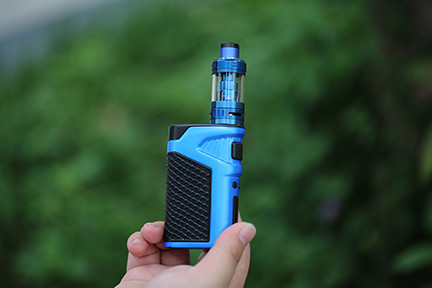A trend we’ve seen in Personal Injury Law is an increase in cases of burns and severe injuries from what the FDA calls “electronic nicotine delivery systems (ENDS).”
Common ENDS terms include: vapes, vaporizers, vape pens, hookah pens, electronic cigarettes (e-cigarettes or e-cigs), and e-pipes (FDA).
These devices often resemble a pen and are commonly promoted as an alternative to cigarette smoking. Instead of the traditional method of lighting up a cigarette with an open flame, ENDS run off of an internal battery that emits nicotine doses from e-liquid in the form of vapor.
It’s this battery that makes ENDS potentially dangerous.
Learn more about our Sacramento Product Liability Attorney Services.
Why do ENDS explode?
 Of the 274 e-cigarette explosions reported by ecigone.com, 182 resulted in personal injury or death. The batteries inside ENDS, which can either be the battery issued with the device or an external unaffiliated battery, are responsible for the overwhelming majority of ENDS injuries.
Of the 274 e-cigarette explosions reported by ecigone.com, 182 resulted in personal injury or death. The batteries inside ENDS, which can either be the battery issued with the device or an external unaffiliated battery, are responsible for the overwhelming majority of ENDS injuries.
Some common causes for ENDS battery explosions are:
Using the wrong charger: Never plug an ENDS into a charger meant for another electronic device such as a phone or tablet. Additionally, do not use your computer or car to charge an ENDS. The current from USB chargers varies and is designed for quick charging for electronic entertainment devices, not ENDS.
In 2015, a woman in Riverside, CA was traveling with her husband and attempted to charge her e-cigarette in the car. The battery exploded and caught fire, spewing chemicals that left her with severe burns on her legs, buttocks and hand and emotionally scarred her forever. The Los Angeles Times reported that her lawsuit stated the car charger voltage was nearly five volts. Her ENDS, a VapCigs package, could only hold a charge of less than 4.2 volts.
Lack of battery research or care: Only use batteries recommended by the manufacturer. ENDS batteries vary in voltage and are only compatible with certain atomizers, make sure your batteries and ENDS are a match before purchasing. Additionally, battery explosions can come from a lack of care and attention. Unplug batteries as soon as they’re done charging, monitor their heat while charging and look for defects or imperfections in the batteries outer seal. Avoid carrying batteries in your pocket because keys and coins (by connecting the battery’s positive and negative terminals) can cause the lithium-ion battery to short. Do not expose your ENDS to extreme temperatures or moisture and never charge it overnight.
In 2016, Orange County resident Spencer Beck suffered severe burns that required two surgeries and skin grafts over an 11-day period after his ENDS exploded in his pocket at a friend’s apartment.
Mods: Mods are “modified” ENDS that are larger and more powerful than common pens. Modifications include a larger battery, larger e-liquid capacities or a block-like shape and should only be used by more experienced vaporizers. Mechanical mods give users more direct access to the battery and do not regulate the voltage. Mods are designed for an enhanced vaping experience, not safe consumption.
Mods are responsible for the one of the only recorded deaths associated with an ENDS explosion. In May 2018, the Washington Post reported that Tallmadge D’Elia, a 38-year-old Florida man, was killed by a “projectile wound of head” when his modified vape pen exploded. He also suffered burns on about 80% of his body from a small house fire.
Laws Pertaining to ENDS
When injuries arise from the malfunction of ENDS, product liability law is what’s in question. The three main categories of product liability are defective design, manufacturing defect, or lack of adequate warnings or instructions.
- Defective design: A company is liable for a design defect when there was a foreseeable risk posed by the product when it was manufactured as intended and used for its intended purposes.
- Manufacturing Defect: When a product is improperly manufactured and isn’t reflective of its intended design, the manufacturer is can be found liable.
- Lack of Adequate Warning or Instructions: Even if the product’s design is structurally sound and the product was manufactured, the product itself can still be inherently dangerous. The manufacturer must warn customers of potential dangers that may be present in a product. Also, the manufacturer must educate customers on how to use the product so that they can use the product safely and avoid injury.
“E-Cigarette Explosions: Comprehensive List.” ECigOne.com
“California Product Liability Laws.” Findlaw, Thomson Reuters
Products, Center for Tobacco. “FDA Regulations for Tobacco Product Manufacturers.” U S Food and Drug Administration Home Page, Center for Biologics Evaluation and Research.
Branson-Potts, Hailey. “Woman Burned by Exploding e-Cigarette Battery Awarded $1.9 Million.” Los Angeles Times, Los Angeles Times, 1 Oct. 2015, www.latimes.com/local/crime/la-me-ecigarette-burns-verdict-20151001-story.html.
Chen, Ted. “E-Cigarette Explosion Lawsuit.” NBC Southern California, NBC Southern California, 4 Feb. 2016.
Vapes, vaporizers, vape pens, hookah pens, electronic cigarettes (e-cigarettes or e-cigs), and e-pipes are growing in usage faster than regulation. This means that poorly designed, cheaply produced and potentially harmful products are on the market. Though these products were designed as an alternative to the effects of traditional cigarettes, the risk of these products malfunctioning is very real. Electronic nicotine delivery systems are a risky purchases that should be made with research, caution and care. If you’ve been injured or have a love one that’s been injured as the result of ENDS malfunction, our experienced Sacramento product liability lawyers would be happy to offer a free consultation to determine what rights you may have.
